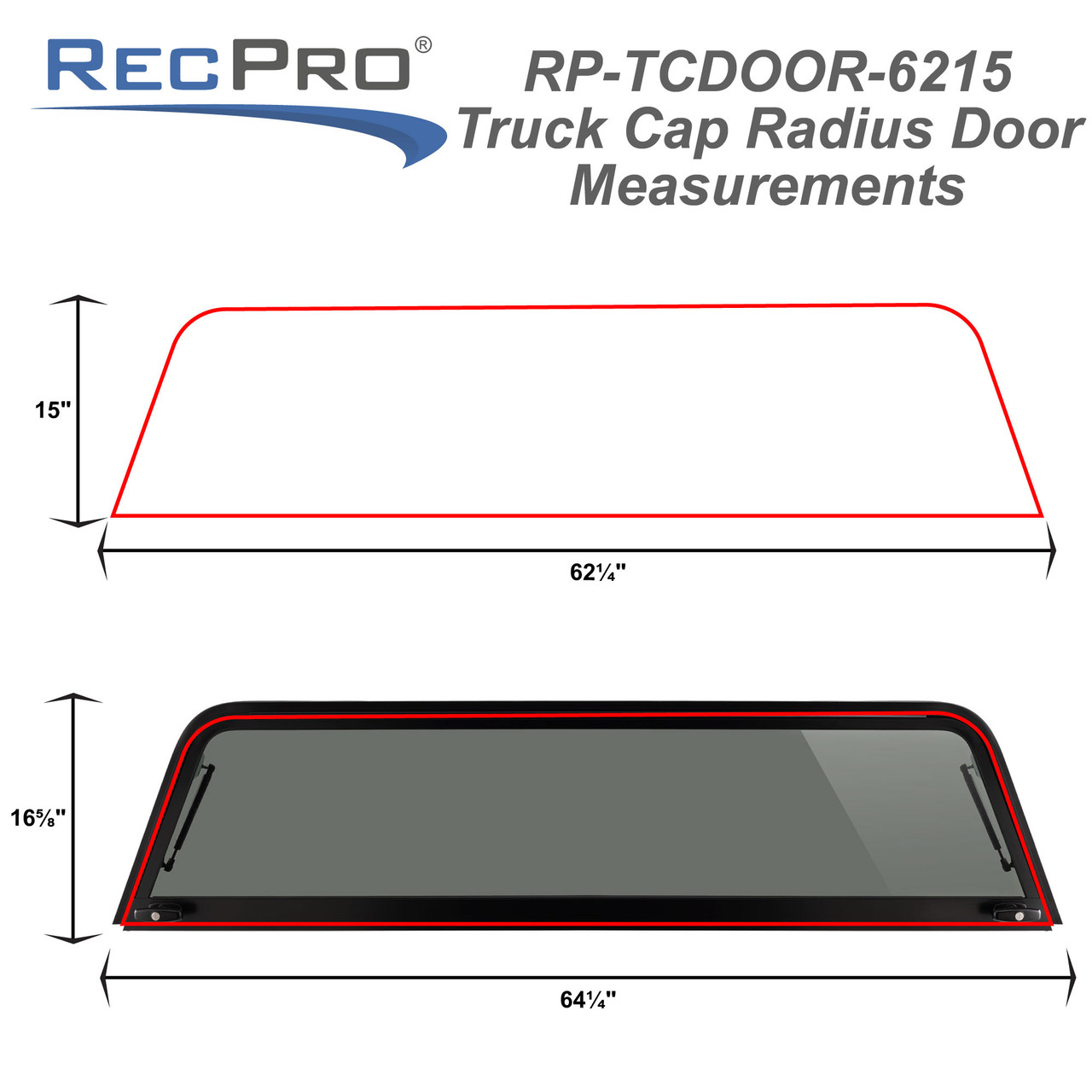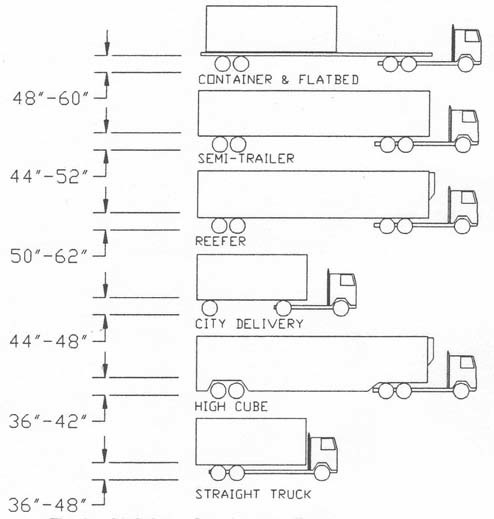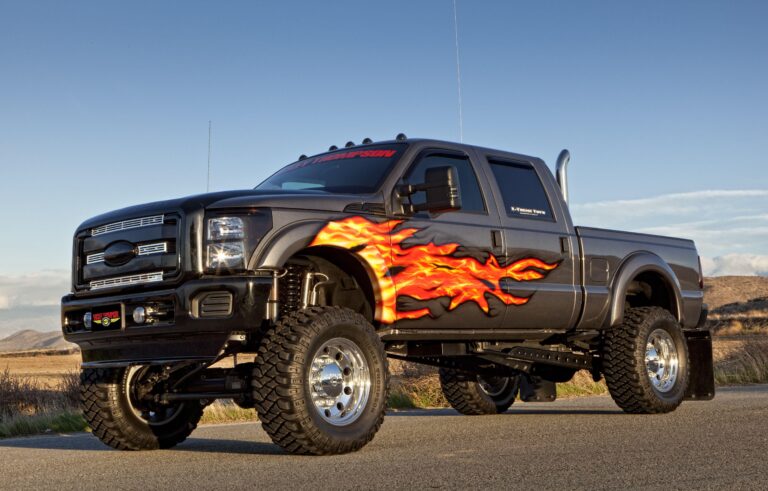What Are The Sizes Of Truck Caps In 2021: A Comprehensive Guide
What Are The Sizes Of Truck Caps In 2021: A Comprehensive Guide cars.truckstrend.com
Truck caps, also known as truck toppers or camper shells, are indispensable accessories for truck owners seeking to enhance their vehicle’s utility, security, and weather protection. From securing tools and equipment for work to safeguarding camping gear for weekend adventures, a truck cap transforms an open truck bed into a versatile, enclosed cargo space. However, the effectiveness and aesthetic appeal of a truck cap hinge entirely on one critical factor: its size. In 2021, understanding the nuances of truck cap sizing was paramount, as a perfectly fitted cap ensures not only optimal functionality but also a seamless, factory-like appearance, preventing leaks, improving aerodynamics, and maximizing security. This comprehensive guide will delve into the intricacies of truck cap sizes in 2021, providing you with the knowledge needed to make an informed decision.
Understanding Truck Cap Sizing Fundamentals
What Are The Sizes Of Truck Caps In 2021: A Comprehensive Guide
Unlike a universal car cover, truck caps are highly specific to the make, model, and year of your pickup truck. There is no "one size fits all" solution. Manufacturers produce caps tailored to the precise dimensions and contours of each truck’s bed and cab. This specificity accounts for variations in bed length, bed width, tailgate design, and even the subtle curves of the truck’s cab roofline. In 2021, the market offered a vast array of truck models, each with its own unique sizing requirements, making accurate measurement and model identification crucial.
The primary dimensions that dictate truck cap sizing are:
- Bed Length: The most critical measurement, determining the overall length of the cap.
- Bed Width: The measurement across the truck bed, ensuring the cap sits flush on the bed rails.
- Cab Height/Overall Height: This influences the profile of the cap, whether it’s flush with the cab, slightly elevated, or significantly taller for maximum cargo volume.
- Truck Make, Model, and Year: These details inform the manufacturer about specific design elements like tailgate angles, bed rail caps, and cab contours that a generic measurement might miss.

Even within the same truck model, variations existed in 2021, such as "short bed," "standard bed," and "long bed" options, each requiring a distinct cap size. For instance, a Ford F-150 could come with a 5.5-foot, 6.5-foot, or 8-foot bed, and a cap designed for one would not fit the others.
Key Measurements You Needed to Take
Before even considering a truck cap purchase in 2021, precise measurements of your truck bed were essential. Here’s how to take them accurately:
- Bed Length: Measure from the inside edge of the bulkhead (the wall closest to the cab) to the inside edge of the tailgate, with the tailgate closed. Do not measure the top rail, but the actual usable bed length. Common bed lengths in 2021 included:

- 5.5 feet (approximately 65 inches): Often found on crew cab short bed trucks (e.g., Ford F-150 SuperCrew, Ram 1500 Crew Cab, Chevy Silverado 1500 Crew Cab).
- 6.5 feet (approximately 78 inches): A very common standard bed length for extended cab and some crew cab models (e.g., Ford F-150 SuperCab, Toyota Tundra Double Cab).
- 8 feet (approximately 96 inches): Typically found on regular cab or long bed crew/extended cab heavy-duty trucks (e.g., Ford F-250/350, Ram 2500/3500, Chevy Silverado 2500/3500).
- Bed Width: While important, this measurement is less critical for the buyer as cap manufacturers design for the specific truck model. However, for verification, measure the width between the inside edges of the bed rails. Some manufacturers might also specify outer rail to outer rail measurements.
- Cab Height/Overall Height: This isn’t a measurement you take on the bed, but rather a design choice.
- Cab-High: These caps are designed to be flush with the height of your truck’s cab roofline, offering a streamlined, factory-integrated look.
- Mid-Rise: These caps are typically 2-6 inches taller than the cab, providing a bit more internal volume without drastically changing the truck’s profile.
- High-Rise/Walk-in: These caps are significantly taller, often with enough headroom to stand or walk around inside, popular for commercial or camping applications.

Beyond dimensions, always have your truck’s full make, model, and year (e.g., 2021 Toyota Tacoma Double Cab, Short Bed) ready. This information is crucial for manufacturers to ensure the cap’s design matches your truck’s specific bed rail contours, tailgate angle, and body lines.
Types of Truck Caps and Their Sizing Implications
The type of truck cap you choose directly impacts its size and how it integrates with your vehicle. In 2021, the main categories included:
- Cab-High Caps: These are the most popular choice. Their sizing is meticulously engineered to match the bed length and width, and crucially, the height of your truck’s cab. This creates a seamless, aerodynamic profile that often looks like an extension of the truck itself. The focus here is on a perfect fit that complements the truck’s original design.
- Mid-Rise Caps: Offering a compromise between aesthetics and utility, mid-rise caps are designed to match the bed length and width but stand a few inches higher than the truck’s cab. This slight increase in height significantly boosts interior cargo volume, making them ideal for carrying slightly taller items without making the truck overly bulky. Sizing still requires precise bed dimensions.
- High-Rise/Commercial Caps: These caps prioritize maximum interior volume. While they still need to match the bed’s length and width perfectly, their height can vary significantly, often allowing for standing room inside. They are common for commercial fleets, construction, or serious overland/camping setups. Their sizing is less about matching the cab’s aesthetics and more about maximizing the functional space over the bed footprint.
- Wedge/Slanted Caps: These caps have a unique design, often sloping upwards from the cab towards the tailgate. While their internal volume varies, their base dimensions still depend entirely on the truck bed’s length and width.
Important Considerations Beyond Basic Dimensions
Purchasing a truck cap in 2021 involved more than just length and width. Several other factors influenced the overall fit, function, and satisfaction:
- Material Differences: While the core dimensions remain tied to the truck bed, the material (e.g., fiberglass, aluminum) can slightly influence the cap’s wall thickness and overall weight. Fiberglass caps typically offer a smoother, painted finish that integrates well with the truck’s paint, while aluminum caps are often more rugged and utilitarian.
- Fit and Finish: A well-sized cap will sit flush on the bed rails, seal effectively against the elements, and align perfectly with the truck’s contours. A poor fit can lead to leaks, rattling, compromised security, and a less attractive appearance.
- Weight Distribution: The size and material of the cap contribute to its weight. A larger, heavier cap will affect your truck’s payload capacity, center of gravity, and fuel economy. While not a "sizing" factor in terms of dimensions, it’s a consequence of choosing a larger cap type.
- Accessory Compatibility: While not directly part of the cap’s base size, consider how the chosen cap size will accommodate accessories like roof racks, interior lighting, fishing rod holders, or toolboxes. Taller caps naturally offer more vertical space for internal organization.
- Vehicle Modifications: If your truck had aftermarket modifications in 2021, such as lift kits, oversized tires, or custom bed liners, these might indirectly influence your cap choice. For instance, a very tall high-rise cap on a lifted truck might make it difficult to access parking garages. Custom bed liners can sometimes interfere with the cap’s sealing surface, requiring minor adjustments or specific cap designs.
Practical Advice for Purchasing a Truck Cap in 2021
- Measure, Measure, Measure: Use a reliable tape measure and double-check your bed length at least twice.
- Consult Reputable Dealers: Authorized dealers for brands like ARE, Leer, Snugtop, and ATC had extensive databases in 2021 to match caps precisely to your truck’s VIN or make/model/year. They could account for subtle variations.
- Utilize Online Configurators: Many leading manufacturers offered online tools where you could input your truck’s details and see compatible cap options, often with 3D renderings.
- Consider Future Needs: If you anticipated needing more cargo space later, opting for a mid-rise or even high-rise cap from the outset could save you money and hassle compared to upgrading later.
- Professional Installation: While some experienced DIYers installed caps, professional installation ensures a proper seal, correct electrical connections (for lights, locks), and secure mounting, which is critical for safety and longevity.
Challenges and Solutions in Truck Cap Sizing
- Older or Discontinued Truck Models: Finding a new cap for a truck model that was out of production in 2021 could be challenging. Solutions included searching the used market (e.g., Craigslist, eBay, specific forums) or, in rare cases, custom fabrication (though this is expensive).
- Aftermarket Bed Liners/Accessories: Drop-in bed liners or rail caps can sometimes alter the precise dimensions or surface of the truck bed, potentially causing minor fit issues or requiring specific mounting clamps. Discuss any such accessories with your dealer.
- Misinformation: Rely only on official manufacturer specifications or precise measurements. Avoid guessing or relying on vague descriptions.
Table: General Truck Cap Size & Price Ranges (2021 Estimate)
Disclaimer: Prices for truck caps vary significantly based on brand, material (fiberglass vs. aluminum), features (windows, lighting, roof racks, carpeted headliners, remote locks, power outlets), paint matching, and regional dealer markups. The prices below are very general estimates for new caps in 2021 and should be used for rough budgeting only.
| Truck Bed Length (Approx.) | Common Truck Models (Examples for 2021) | Cap Type (Common) | Estimated Price Range (USD – 2021) | Key Sizing Notes |
|---|---|---|---|---|
| 5.5 ft (65") | Ford F-150 SuperCrew, Ram 1500 Crew Cab, Chevy Silverado 1500 Crew | Cab-High, Mid-Rise | $1,500 – $3,500+ | Designed to match short-bed crew cab dimensions and cab height. |
| 6.5 ft (78") | Ford F-150 SuperCab, Toyota Tundra Double Cab, Chevy Silverado Extended Cab | Cab-High, Mid-Rise, High-Rise | $1,600 – $4,000+ | Standard bed size for many full-size trucks; offers more versatility. |
| 8 ft (96") | Ford F-250/350 Long Bed, Ram 2500/3500 Long Bed, Chevy Silverado 2500/3500 Long Bed | Cab-High, Mid-Rise, High-Rise | $1,800 – $4,500+ | Longest cap size, primarily for heavy-duty trucks; often used for commercial applications. |
| Mid-Size Trucks | Toyota Tacoma, Chevy Colorado, Ford Ranger, Jeep Gladiator (Various Bed Lengths) | Cab-High, Mid-Rise | $1,400 – $3,000+ | Specific to mid-size truck bed dimensions, which are generally narrower and shorter. |
| Commercial/Utility | Any Length (often 6.5ft, 8ft) | High-Rise, Specialty | $2,500 – $6,000+ | Focus on internal volume and ruggedness; less emphasis on cab-matching aesthetics. |
Frequently Asked Questions (FAQ)
Q1: Can I use a cap from one truck model on another?
A1: Generally, no. Truck caps are custom-fitted to specific truck makes, models, and years due to variations in bed length, width, tailgate design, and cab contours. A cap from a Ford F-150 will not fit a Chevy Silverado, nor will a cap from an 8-foot bed fit a 6.5-foot bed of the same model.
Q2: How do I measure my truck bed accurately for a cap?
A2: Measure the interior length of your truck bed from the bulkhead (the wall closest to the cab) to the inside edge of the closed tailgate. Use a steel tape measure for accuracy.
Q3: Do truck caps come in universal sizes?
A3: No, there are no universal truck cap sizes. Each cap is designed for a specific truck make, model, and bed length.
Q4: What’s the main difference between cab-high and mid-rise in terms of sizing?
A4: Both are sized to fit your truck bed’s length and width. The key difference is height: a cab-high cap matches the height of your truck’s cab for a streamlined look, while a mid-rise cap is a few inches taller than the cab, offering increased cargo volume.
Q5: Does the material of the truck cap affect its size?
A5: The material (e.g., fiberglass, aluminum) does not typically affect the cap’s external dimensions (length, width, height profile), which are determined by the truck bed. However, material choice affects weight, durability, and appearance.
Q6: Can I install a truck cap myself?
A6: While technically possible for some, professional installation is highly recommended. It ensures the cap is properly sealed against water and dust, securely clamped to the bed rails, and all electrical connections (for interior lights, third brake light, power locks) are correctly wired.
Conclusion
In 2021, navigating the world of truck cap sizes was a precise undertaking. The perfect truck cap isn’t just an accessory; it’s an extension of your vehicle’s capabilities, offering enhanced security, protection, and cargo management. Understanding that truck caps are highly specific to your truck’s make, model, year, and bed length was the foundational knowledge. By taking accurate measurements, identifying your truck’s precise specifications, and considering the various types of caps available, you could confidently choose a cap that not only fit perfectly but also met all your functional and aesthetic needs. A well-fitted cap truly transforms your truck, making it more versatile and ready for any adventure or task.





